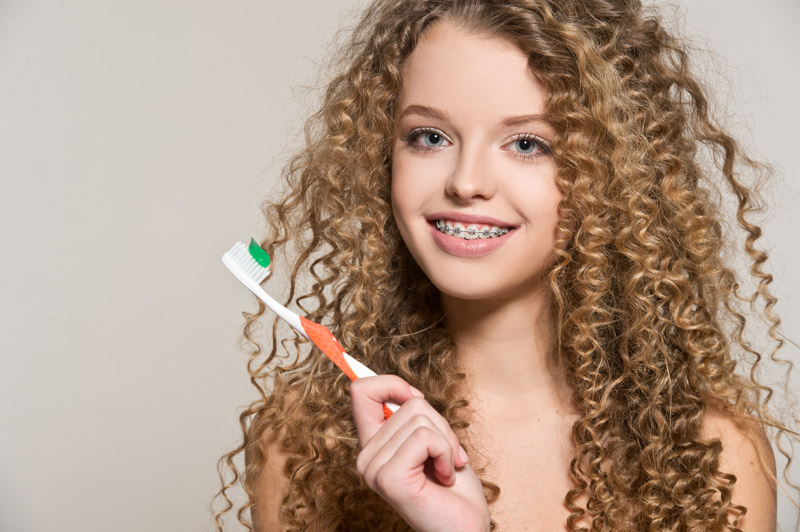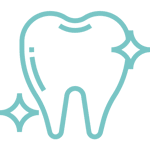How Do You Brush and Floss When You Have Braces?
It’s very important to brush and floss daily to keep your teeth and gums healthy throughout your orthodontic treatment. Food particles can accumulate on teeth and in braces, and over time, turn into plaque. The bacteria that results from this accumulation can lead to gum disease, tooth decay and even loss of teeth. If you would like help choosing the right toothbrush, toothpaste, and dental floss for your appliance, please let us know.

Brushing

Brush the outside and inside surfaces of your teeth using small, gentle, circular motions to reach food particles that may be under your gum line. Hold the head of the toothbrush at a 45-degree angle to the gum line as you brush. Be sure to brush all areas between teeth, between braces and the surface of each tooth.
Brush your teeth’s chewing surfaces and the inside surface of your front teeth using short, gentle, back-and-forth motions. Pay close attention to the areas around your brackets or other appliances. And lastly, brush your tongue and the roof of your mouth before you rinse. Be sure to rinse your mouth thoroughly with water after every brushing.
Especially during orthodontic treatment, brush your teeth three times daily to avoid the accumulation of food particles in your teeth and braces:

In the morning after breakfast

After lunch or right after school

After dinner

At bedtime
It is also important to floss and use an antibacterial mouthwash and fluoride treatment throughout your orthodontic treatment and after to maintain a beautiful smile and good oral hygiene.
Flossing
Flossing at least every night will help keep your teeth and braces clean, which will also help keep your treatment time on track. If you can floss after every meal, even better! For areas between the teeth that a toothbrush can’t reach, use dental floss to remove food particles and plaque. Flossing takes more time and patience when you are wearing braces, but it is important to floss your teeth every day.
To floss with braces, use a floss threader or special orthodontic floss to thread the floss behind each wire. Pull a small length of floss from the dispenser through the threader and slide it up and down along the front of each tooth. You will be able to feel when the tooth is clean and hear the squeak of the floss against your clean teeth. Use care around your archwire and do not floss too forcefully around it or put too much pressure on it. After you floss between your archwire and braces, floss between your other teeth and gums.
Floss at night to make sure your teeth are clean before you go to bed. When you first begin flossing around your braces, your gums may bleed a little. If the bleeding does not go away after the first few times, inform a staff member at your next appointment.
Always floss at night to make sure your teeth are clean before you go to bed. When you first begin flossing around your braces, your gums may bleed a little. If the bleeding does not go away after the first few times, be sure to tell us at your next appointment.
If you are flossing without the floss threader, pull a small length of floss from the dispenser. Wrap the ends of the floss tightly around your middle fingers. Guide the floss between all teeth to the gum line, pulling out food particles or plaque. Unwrap clean floss from around your fingers as you go, so that you have used the floss from beginning to end when you finish. Floss behind all of your back teeth.
